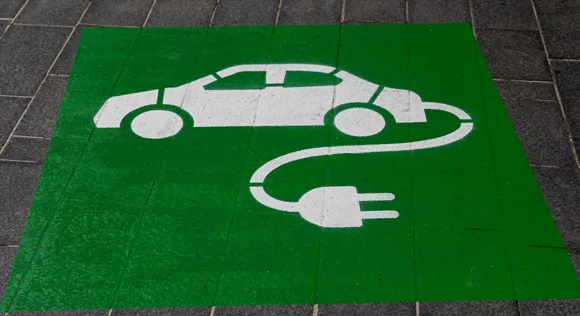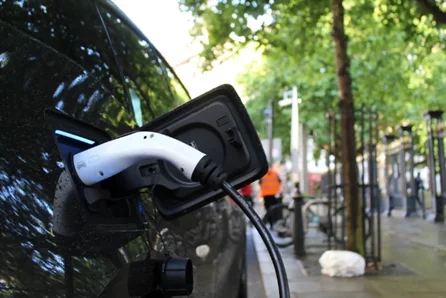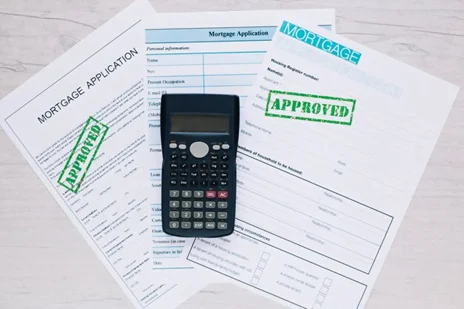
Are you planning to purchase an electric vehicle this year? If so, you may be eligible for a tax credit by completing IRS Form 8936. This tax credit is an excellent way to save money on your taxes while also reducing your carbon footprint. However, it’s essential to complete the form correctly to ensure that you receive the full benefit of the credit.
In this article, we’ll provide a step-by-step guide on how to complete IRS Form 8936. We’ll explain what information you need to include and provide helpful tips to ensure that you complete the form accurately.
What is IRS Form 8936?
Before we dive into how to complete IRS Form 8936, let’s first discuss what this form is and why it’s important. Form 8936 is the Qualified Plug-in Electric Drive Motor Vehicle Credit form. It’s used to claim a tax credit for qualified plug-in electric drive motor vehicles that were purchased and placed into service during the tax year.
The tax credit is based on the capacity of the battery used to power the vehicle. The credit ranges from $2,500 to $7,500 and is available for both new and used electric vehicles. The credit can only be claimed once per vehicle and is non-refundable, which means it can only be used to reduce your tax liability to zero.
Step-by-Step Guide to Completing IRS Form 8936
Now that you know what IRS Form 8936 is let’s dive into the step-by-step guide on how to complete the form. We’ll start with the basic information that you’ll need to gather before filling out the form.
What You’ll Need:
- Vehicle make, model, and year
- Date the vehicle was purchased
- VIN (Vehicle Identification Number)
- Original use of the vehicle (personal or business)
- Gross vehicle weight rating (GVWR)
- Battery capacity
- Total cost of the vehicle
Step 1: Section A
In section A of the form, you’ll need to provide basic information about the vehicle, including the make, model, year, and VIN. You’ll also need to indicate whether the vehicle was purchased new or used.
Step 2: Section B
In section B, you’ll need to provide information about the battery used to power the vehicle. This includes the battery capacity in kilowatt-hours (kWh). The battery capacity can usually be found on the vehicle’s specifications sheet or in the owner’s manual.
Step 3: Section C
In section C, you’ll need to provide information about the vehicle’s original use. Indicate whether the vehicle is used for personal or business purposes. If the vehicle is used for business purposes, you’ll need to provide additional information about the business.
Step 4: Section D
In section D, you’ll need to provide information about the vehicle’s gross vehicle weight rating (GVWR). The GVWR is the maximum weight that the vehicle is designed to carry, including passengers and cargo. You can usually find the GVWR on the vehicle’s specifications sheet or in the owner’s manual.
Step 5: Section E
In section E, you’ll need to provide the total cost of the vehicle. This includes the purchase price, any taxes, and any other fees associated with the purchase of the vehicle.
Step 6: Section F
In section F, you’ll need to calculate the amount of the tax credit that you’re eligible for based on the information you provided in the previous sections. You’ll need to use the formula provided on the form to calculate the credit amount.
Step 7: Section G
In section G, you’ll need to provide information about any other tax credits or deductions that you’re claiming related to the purchase of the electric vehicle. This includes any credits for alternative fuel vehicle charging infrastructure or any other related expenses.
Step 8: Section H
In section H, you’ll need to provide information about any previous tax credits that you’ve claimed for this vehicle. This includes any credits claimed in previous tax years.
Step 9: Section I
In section I, you’ll need to indicate whether you’re claiming the credit for personal use or business use. If you’re claiming the credit for business use, you’ll need to provide additional information about the business.
Step 10: Section J
In section J, you’ll need to sign and date the form. By signing the form, you’re certifying that the information provided is accurate to the best of your knowledge.
Tips for Completing IRS Form 8936

Now that you know the step-by-step process for completing IRS Form 8936, here are some helpful tips to ensure that you complete the form accurately.
- Gather all necessary information before starting to fill out the form. This will make the process much easier and quicker.
- Make sure that you’re eligible for the tax credit before completing the form. The tax credit is only available for qualified plug-in electric drive motor vehicles. Check with the manufacturer to ensure that your vehicle is eligible for the credit.
- Double-check your calculations. The credit amount is calculated based on several factors, including the battery capacity and the cost of the vehicle. Make sure that your calculations are accurate to ensure that you receive the full benefit of the credit.
- Keep accurate records. Keep a copy of the completed form and any supporting documentation in case the IRS requests additional information or documentation.
- File the form with your tax return. The form should be filed with your tax return for the year in which the vehicle was purchased.
Double-check your calculations and keep accurate records
Completing IRS Form 8936 can be a bit daunting, but with this step-by-step guide and helpful tips, you’ll be able to complete the form accurately and claim the tax credit that you’re eligible for. Remember to gather all necessary information before starting, double-check your calculations, and keep accurate records. By following these guidelines, you’ll be on your way to receiving the full benefit of the Qualified Plug-in Electric Drive Motor Vehicle Credit. Happy tax season!
Read more about How To Tax Income From Instagram
FAQ
IRS Form 8936 is a tax form used by taxpayers to claim the electric vehicle tax credit for qualified plug-in electric drive motor vehicles they purchased during the tax year.
Taxpayers who purchased a qualified plug-in electric drive motor vehicle during the tax year and meet certain requirements may be eligible to claim the electric vehicle tax credit.
The amount of the electric vehicle tax credit depends on the make and model of the vehicle, as well as the battery capacity. The maximum credit is $7,500.
Vehicles that are eligible for the electric vehicle tax credit must be new and have four or more wheels. They must be propelled primarily by an electric motor, have a battery capacity of at least 4 kWh, and be able to be recharged from an external source of electricity.
To complete IRS Form 8936, you will need to gather information about your electric vehicle, including the make and model, the date you purchased it, and the amount of the credit you are claiming. You will then need to enter this information on the form and attach it to your tax return.
Yes, there are limitations to the electric vehicle tax credit. The credit begins to phase out for each manufacturer once they have sold 200,000 eligible vehicles in the US. Also, the credit cannot be claimed if the vehicle is used for personal purposes less than 50% of the time.


